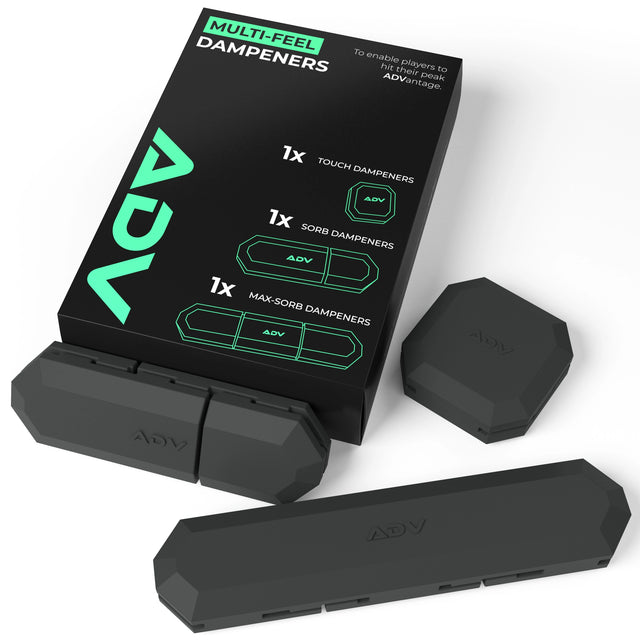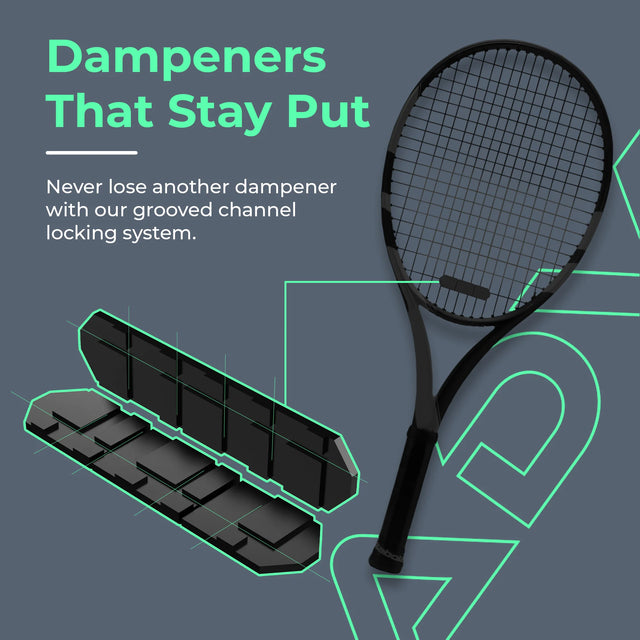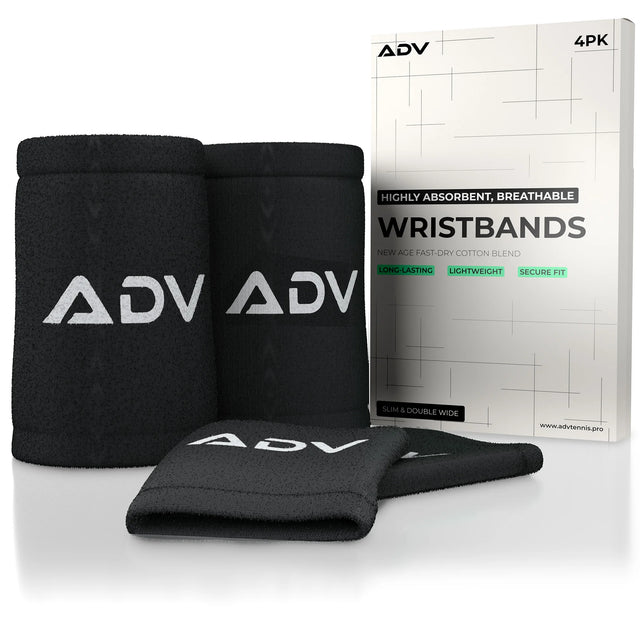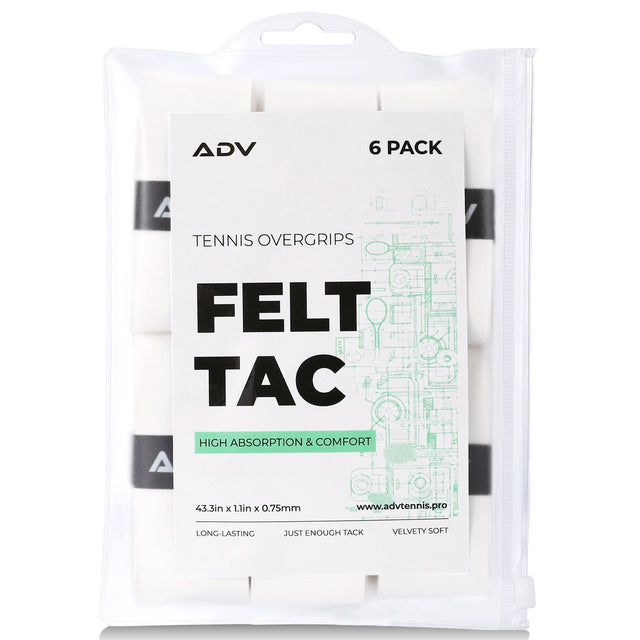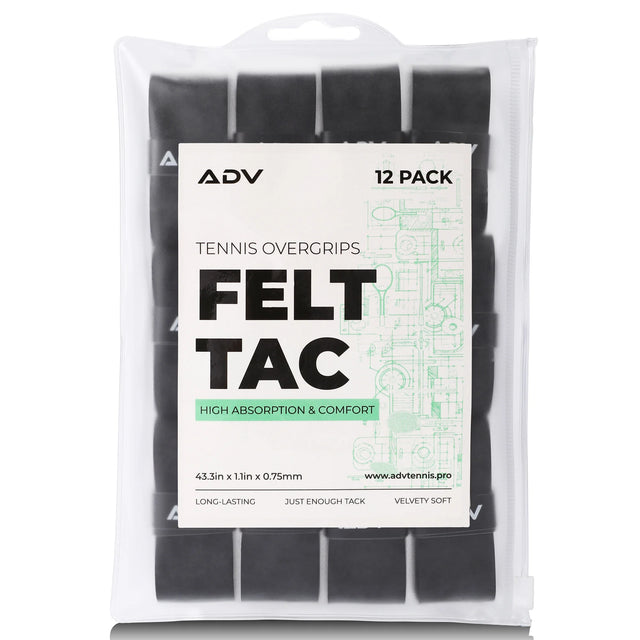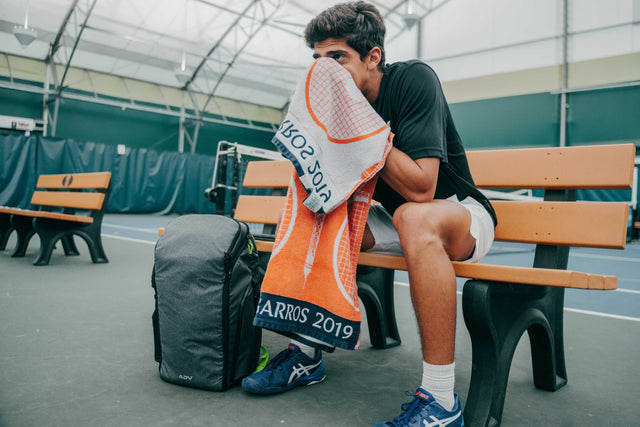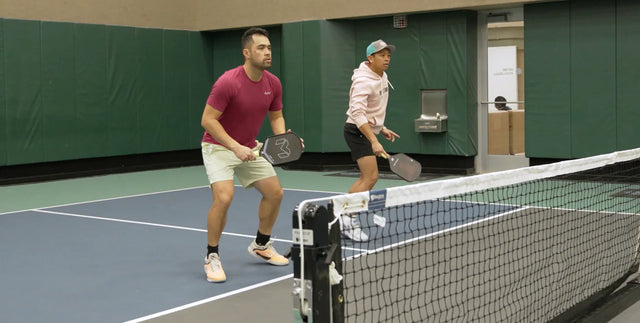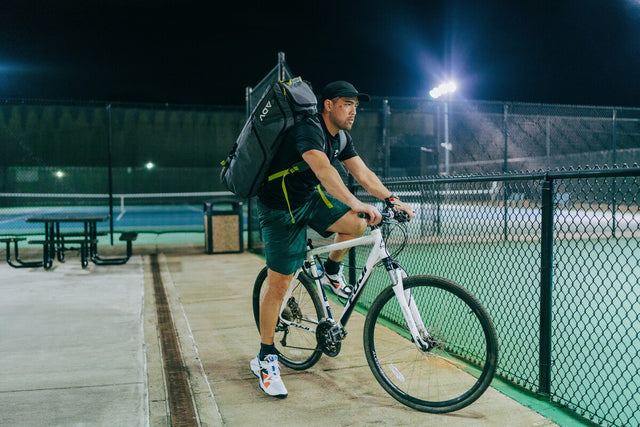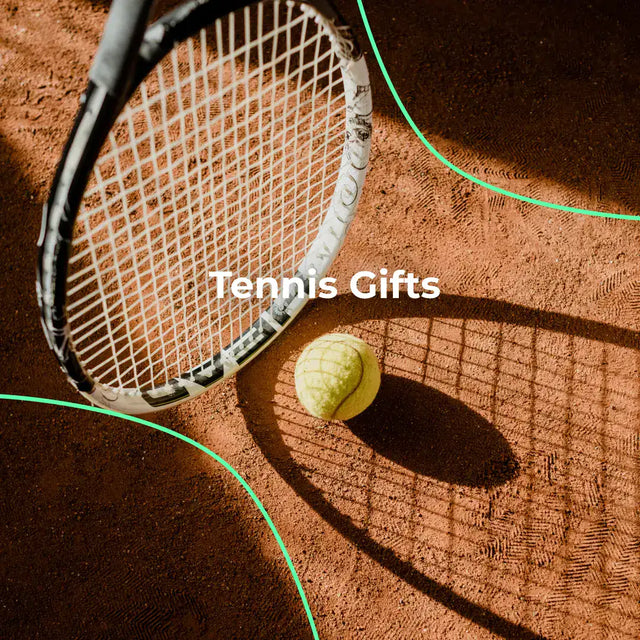How to Choose the Right Tennis Bag for Your Playing Style
When it comes to enhancing your tennis experience, selecting the right tennis racquet bag isn't just about carrying your gear; it's about matching your equipment with your playing style, frequency, and needs. A suitable bag acts not only as a functional accessory for storing and protecting your racquets, shoes, and other equipment but also as a reflection of your commitment to the sport. Whether you are a professional or a weekend player, the right bag can make transportation easier, keep your gear in good shape, and ensure that you are always prepared for a match.
Player Level Considerations
The ideal tennis bag often depends on a player’s skill level and the demands that come with it.
Competitive Players
The best 6-racket tennis bag provides ample space not just for racquets but also for multiple accessories such as balls, shoes, extra strings, towels, and water bottles. Competitive players benefit from bags designed with multiple compartments that help organize equipment effectively, ensuring everything is accessible when needed. Features, like thermal protection pockets to maintain string tension and structured sides to prevent bag collapse, are also significant.
Casual Players
Casual players, who occasionally hit the courts, should prioritize comfort and portability. A tennis bag with backpack straps offers easy transportation, which is particularly useful for those who may also use their bag for activities other than tennis. Lightweight designs that can fit a few racquets and personal items without being bulky are ideal. The focus here is on finding a bag that doesn't weigh you down or add unnecessary bulk to your casual play sessions.
Travel Players
Players who frequently travel for tournaments or leisure activities require a tennis travel bag that withstands the rigors of travel. Durability becomes paramount, with materials that can withstand rough handling and variable weather conditions. Additionally, such bags should come with enhanced storage capacity to accommodate not just racquets, but also clothing, personal items, and even tech devices. Wheels and adjustable handles are advantageous for maneuverability in airports and hotels, making the travel process smoother and more efficient.

Recreational Players
A stylish yet practical large tennis bag can serve their needs effectively, offering enough space for necessary gear without being overly professional. These players often appreciate bags with easy-access pockets for phones, keys, and wallets, and prefer designs that can double as a daily gym bag or a weekend getaway bag.
Essential Features and Functionalities in a Tennis Bag
Selecting the right tennis bag is about more than just aesthetics or brand; it's about ensuring your equipment is protected, accessible, and easy to transport. The most crucial features to evaluate begin with dedicated racket storage. A high-quality tennis bag should offer a secure, padded compartment specifically designed to house your rackets, shielding them from impact, scratches, and temperature fluctuations that can affect string tension. This specialized storage is essential for maintaining the integrity of your rackets, particularly if you own more than one. Next, consider the bag’s overall interior space and compartmentalization. Ample interior room allows you to fit not only rackets but also essential gear such as tennis balls, shoes, water bottles, towels, and a change of clothes. The best bags feature multiple, thoughtfully arranged compartments—separate sections for shoes (often ventilated to reduce odors), mesh or zippered pockets for valuables like keys and phones, and insulated pockets to keep drinks cool. This organization keeps your gear accessible and prevents items from shifting or getting damaged during transport.
Durability is another non-negotiable aspect. Tennis bags endure frequent trips to and from the court, exposure to the elements, and the occasional rough handling. Look for bags constructed from robust materials such as reinforced polyester or nylon, which offer resistance to abrasions, tearing, and moisture. Water-repellent or water-resistant fabrics add an extra layer of protection, ensuring your gear stays dry even in unpredictable weather. Reinforced stitching, sturdy zippers, and padded bases further enhance the bag’s longevity and reliability. The quality of these construction elements can make the difference between a bag that lasts a single season and one that remains a trusted companion for years.
Equally important is the comfort of carrying options. Tennis bags can get heavy, particularly when loaded with multiple rackets and gear, so ergonomic design is essential. Adjustable, padded shoulder straps help distribute weight evenly and reduce strain on your shoulders and back. Some bags offer dual carrying options—like backpack straps and grab handles—so you can adapt to different situations. For those who travel longer distances or commute, features such as contoured shapes, ventilated back panels, and even wheeled bases can significantly improve comfort and convenience.
The Role of Style, Design, and Fashion in Choosing the Perfect Tennis Bag
While functionality and durability are essential considerations, the style and design of a tennis bag can be just as influential in the selection process, allowing players to express their personality both on and off the court. Tennis bags today are available in a vast array of colors, patterns, and aesthetic details, making it easier than ever for players to find a bag that truly reflects their individual taste. Patterns and prints also play a significant role; from sleek geometric shapes to playful graphic prints and even camouflage, these elements can add a unique flair that sets a player apart on the court. For players who value trendiness, pastel shades and modern prints offer a fresh, contemporary vibe. At the same time, textured materials—such as woven fabrics or eco-friendly options—can add depth and tactile interest to the bag’s overall design.
Many players choose their bags not just for functionality but also for how they match their personal style and tennis attire. Sleek, modern designs are often popular among younger players, while others might prefer classic or understated looks. Here’s a list of aspects to consider for merging style with practicality:
-
Color and Design: The color and design of a tennis bag are key to making a personal style statement. Opt for colors that resonate with your personality or align with your tennis club's theme. Vibrant colors can make the bag stand out, while neutral tones may blend seamlessly with different outfits. Whether you prefer a bold pattern that catches the eye or a sophisticated solid color, the choice should reflect your taste and make you feel good about carrying it. Additionally, the design should not only be visually appealing but also functional, with pockets and compartments placed thoughtfully for easy access.
-
Branding and Logos: The presence and prominence of branding and logos on a tennis bag can vary according to personal preference. Some players choose bags with minimal branding for a sleek, professional look that focuses on the bag's design and functionality rather than its brand identity. This can be particularly appealing to those who wish to maintain an elegant and understated appearance.
-
Texture: Materials can range from smooth, high-tech fabrics that give a modern, sleek look to textured weaves that offer a more tactile experience and unique visual appeal. The choice of texture can influence the overall feel and durability of the bag, while patterns can either be bold and vibrant, making the bag a standout accessory, or subtle and sophisticated, enhancing its elegance. When selecting a texture or pattern, consider how it complements your overall tennis attire and how it stands up to regular use in different weather conditions.
The aesthetic elements—color, branding, and texture—play pivotal roles in aligning the bag with one’s style and in making a style statement in the tennis community. A well-chosen tennis bag not only serves functional purposes but also becomes an extension of the player's brand and style on the court.

Comprehensive Overview of Tennis Bag Styles
Understanding the different styles available can help you find one that perfectly matches your playing habits, gear requirements, and sense of style. The main types of tennis bags include sling bags, backpacks, totes, duffels, and traditional racket bags, each offering unique features and advantages suited to different needs.
-
Sling Bags are valued for their lightweight and streamlined design. Typically featuring a single strap worn across the back or shoulder, sling bags are ideal for players who prefer to travel light or need a convenient option for quick trips to the court. They generally hold one or two rackets along with a few essentials, making them perfect for casual matches or practice sessions. Their compact size and easy-carry design ensure that you can move around comfortably, whether you’re heading to a local court or running errands before or after your game.
-
Backpack Tennis Bags have surged in popularity due to their versatility and hands-free convenience. These bags offer dual shoulder straps for even weight distribution, making them comfortable for players who commute on foot, bike, or public transport. Most tennis backpacks can accommodate up to two or three rackets and feature multiple compartments for accessories, personal items, and even shoes.
-
Tote Bags are favored by players who prioritize both fashion and function. With spacious interiors and stylish exteriors, tennis totes can hold rackets, apparel, and accessories while doubling as a chic everyday bag. Many totes include padded sections for rackets and smaller pockets for valuables, ensuring your gear stays organized and protected.
-
Duffel Bags are the go-to for players who require maximum space and flexibility. With a large main compartment, duffels can accommodate multiple rackets, shoes, clothing, towels, and other accessories. Their simple, wide-opening design allows for easy packing and quick access to gear. Duffel bags are especially suitable for tournament players, those who carry extra equipment, or anyone needing a versatile bag that can serve as both a gym and travel bag.
-
Traditional Racket Bags are specifically engineered for tennis, often featuring a long, rectangular shape that can hold anywhere from three to twelve rackets. These bags typically include specialized pockets for balls, strings, and accessories, as well as thermal protection to safeguard racket strings from temperature changes. Their structured sides help protect contents from impacts and maintain the bag’s shape. Racket bags are ideal for competitive or serious recreational players who need to transport multiple rackets and a full range of gear.
-
Traditional Tennis Bags are designed primarily for function, offering ample space and specialized compartments for racquets, balls, and other equipment. These bags typically accommodate between three and twelve racquets and feature various pockets for organizing gear. The best tennis bags in this category provide thermal protection for racquet strings and have firm sides to help maintain the bag’s shape, protecting contents from impacts and the elements.
-
Backpack tennis racket bag designs are increasingly popular among players of all levels due to their ease of use and versatility. These bags integrate the storage capabilities of a traditional tennis bag with the comfort and mobility of a backpack. They usually hold up to three racquets and include extra compartments for accessories, making them ideal for players who prefer to travel light or those commuting by bike or public transport.
-
Duffel-style tennis Bags offer a flexible, spacious option for players needing extra room without specific compartments. These bags are perfect for players who pack additional gear like workout clothes, larger water containers, or extra towels. Their wide openings and simpler structure allow for quick packing and easy access, making them a favored choice for quick transitions from work to the court.
Material Considerations
Breathable Materials for Ventilation
Ventilation is a key factor in maintaining the longevity and freshness of your tennis equipment. Bags designed with breathable materials prevent moisture build-up from sweat-soaked clothes and shoes, which can lead to mold and unpleasant odors. Mesh sections or ventilated compartments are especially beneficial after long matches or intense practice sessions, helping air out contents effectively.
Eco-Friendly Material Options
As environmental concerns continue to rise, eco-friendly materials are becoming a popular choice for tennis players who are mindful of their ecological footprint. These materials not only minimize environmental impact but also offer durability and practicality. Here’s a list of common eco-friendly materials used in tennis bags:
-
Recycled Polyester: This material is crafted from recycled plastic bottles, transforming waste into a valuable product. Recycled polyester retains the strength and durability of its traditional counterpart, ensuring that the tennis bag can withstand the rigors of frequent use while significantly reducing the reliance on virgin materials. It is a testament to how sustainable practices can be seamlessly integrated into sports gear without compromising quality or performance. Moreover, using recycled polyester also helps reduce the amount of plastic waste, making it a smart choice for environmentally conscious players.
-
Organic Cotton: Compared to conventional cotton, organic cotton has a lower environmental impact as it is grown without the use of harmful chemicals, such as pesticides and synthetic fertilizers. This makes it a safer choice for the environment and the people involved in its cultivation. Organic cotton is generally used in components of tennis bags that are less dependent on weather resistance, such as internal linings or pocket flaps. This material is not only gentler on the planet but also provides a soft, natural texture that enhances the user's experience.
-
Hemp: Hemp is renowned for its strength and durability, making it an excellent material for tennis bags. It is a biodegradable and highly sustainable crop that requires minimal water, fertilizers, and pesticides. Hemp fibers become softer with each use, which contributes to the comfort and aesthetic appeal of the bag over time.
-
TPE (Thermoplastic Elastomer): TPE is an innovative material often used for its waterproof properties in tennis bags. It serves as a less toxic alternative to traditional materials like PVC. TPE is not only recyclable but also boasts lower levels of harmful chemicals, making it safer for both the environment and the users. Its versatility and safety profile make TPE a popular choice among manufacturers looking to create durable, eco-friendly sports accessories.
These options not only reduce the amount of waste and toxins released into the environment but also align with the values of environmentally conscious players. In recent years, brands have begun to integrate these materials into their product lines, responding to consumer demand for products that reflect a commitment to environmental responsibility.

Brand and Budget Considerations
Brand reputation and budget constraints significantly influence the selection process for tennis bags. Opting for a reputable brand may mean paying a premium, but it often translates to longer-lasting products, better customer support, and access to the latest design advancements. However, with a wide range of options on the market, many high-quality, lesser-known brands offer excellent value at more accessible price points. Look for seasonal sales, sign up for brand newsletters for exclusive discounts, or explore previous season models, which can often be found at reduced prices without sacrificing quality.
Making an Informed Decision
Comparing Top-Rated Tennis Bags
To start, examine the specific features each bag offers. This includes not only basic aspects such as size and number of compartments but also specialized features like insulated pockets for maintaining drink temperatures, ventilated sections for shoes or sweaty gear, and padded straps for enhanced comfort. Delve into customer reviews and expert opinions to gauge the real-world performance of each tennis bag. Customer reviews can be particularly telling, as they often reveal how the bag holds up over time and under various conditions, which might not be immediately apparent from the product specifications. For instance, a bag might claim to be water-resistant, but only user feedback will confirm how effective this is in heavy rain. Similarly, expert reviews often provide a comparative analysis against similar bags, highlighting strengths and weaknesses from a professional standpoint.
Budgeting for Your Purchase
Finally, setting a budget for buying a tennis bag is essential. Prices can vary significantly based on brand, quality, and features. Determine how much you are willing to spend and what features you consider essential. Keep in mind that investing a bit more in a high-quality bag can be cost-effective in the long run, as it is likely to last longer and provide better protection for your equipment. Balancing cost with quality ensures that you get the best value for your money without compromising on the essential aspects that suit your tennis-playing habits.
When finalizing your decision on which new tennis bags to purchase, consider how each bag aligns with your lifestyle both on and off the court. Opt for a model that not only fits all your gear comfortably but also is easy to carry and matches your style. Don't overlook the importance of comparative research to ensure the bag's quality and suitability. Remember, a well-chosen tennis bag not only serves its functional purpose but also boosts your confidence and enjoyment of the game.


